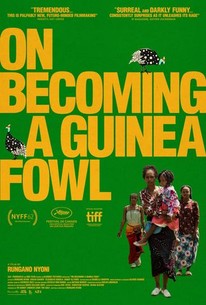How to Be a Guinea Fowl: A Surreal Exploration of Family Secrets
In the realm of cinematic storytelling, few films manage to intertwine surrealism with the raw, unfiltered truths of family dynamics like How to Be a Guinea Fowl. The Pharaoh Becomes”. This vivid narrative unfolds on a deserted road in the dead of night, where Shula, a young woman, stumbles upon the lifeless body of her uncle. As the film unfolds, viewers are drawn into a web of hidden secrets that embody the complexity of a middle-class Zambian family. This unique perspective offers a fascinating exploration of the lies we tell ourselves and the disturbing truths that lurk beneath the surface.
The Setting: A Night of Revelation
The film begins with an eerie atmosphere that immediately captivates the viewer. Shula’s encounter with her uncle’s body serves as a catalyst for the unfolding drama. The empty road symbolizes a journey not only through physical space, but also through the emotional landscapes of grief, denial and revelation. The stark contrasts of the night and the vivid colors that follow enhance the surreal experience and invite viewers to delve deeper into the narrative.
Character Dynamics: Revealing Family Secrets
Shula and her cousins play a crucial role in unravelling the complicated fabric of their family history. Their interactions are tinged with both love and resentment, highlighting the complexity that often characterizes family relationships. As the funeral begins, the cousins begin to confront the long-buried secrets that have shaped their identity and shared family history. This exploration of character dynamics is essential to understanding the film’s major themes.
- Shula’s journey of self-discovery and acceptance.
- The influence of family expectations on personal choices.
- Confronting past traumas and their impact on the future.
Thematic Elements: Lies and Truths
At its core, On Becoming a Guinea Fowl is a film about the lies we tell ourselves and the truths we often avoid. The title itself suggests a transformation and perhaps reflects the characters’ struggle to come to terms with their reality. The symbolism of the guinea fowl, a bird often associated with family and community in Zambian culture, highlights the importance of connection and the weight of family obligations.
Throughout the film, the characters grapple with their identities in relation to their family history. The secrets they reveal are not only personal in nature, but also touch on broader social issues and encourage viewers to reflect on their own stories. This universal exploration of truth and deception is what makes the film so popular with audiences across cultures.
Cinematography and Style: A Feast for the Eyes
One of the outstanding features of “On Becoming a Guinea Fowl” is its breathtaking cinematography. The visual storytelling complements the surreal elements of the narrative and creates a vivid backdrop for the unfolding drama. The use of color, light, and shadow enhances the emotional depth of the film and immerses the audience in Shula’s world.
Rungano Nyoni’s distinctive style is influenced by various factors, resulting in a film that is both unique and relatable. The mix of humor and tragedy gives depth to the narrative and allows the audience to interact with the characters on multiple levels. The surreal elements emphasize the absurdity of certain situations, while the vivid images anchor the story in reality.
Reception and Impact: A Conversation Starter
Upon its release, On Becoming a Guinea Fowl “Critically acclaimed for its innovative storytelling and powerful themes.




 32/35
32/35